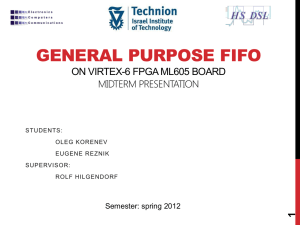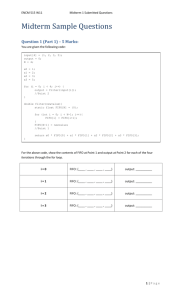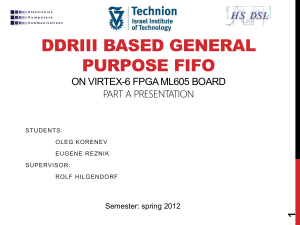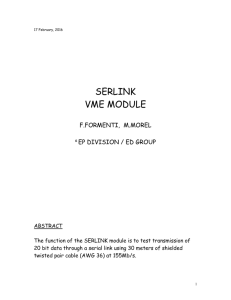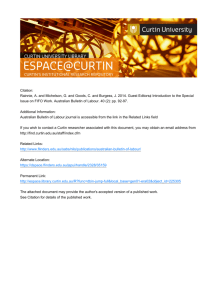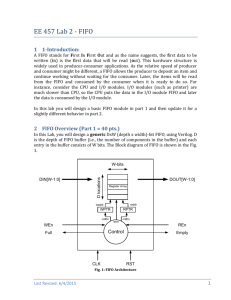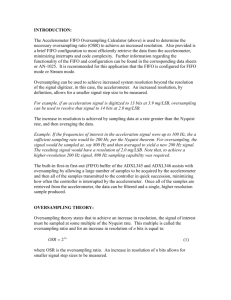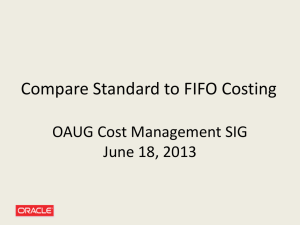General Purpose FIFO.
advertisement
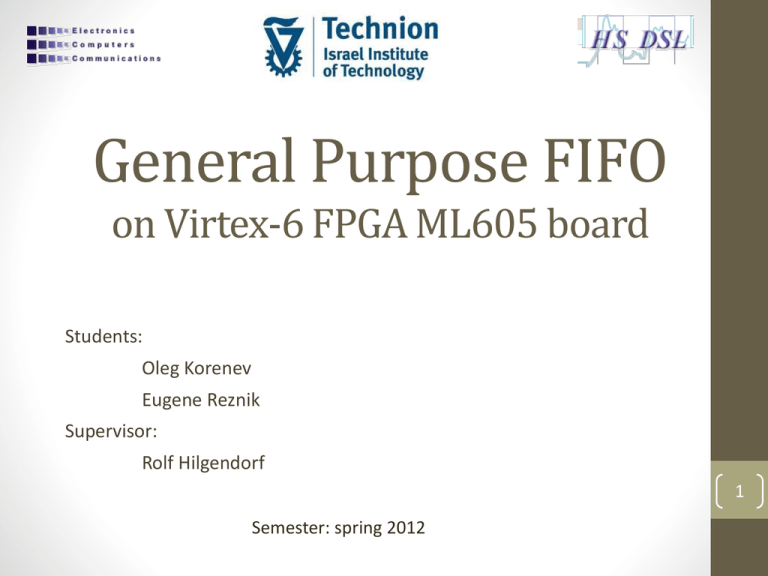
General Purpose FIFO on Virtex-6 FPGA ML605 board Students: Oleg Korenev Eugene Reznik Supervisor: Rolf Hilgendorf 1 Semester: spring 2012 Content 1. 2. 3. 4. Project overview Goals Motivation Specifications 5. Block Diagram 6. 7. 8. 9. Initial steps Possible solutions Workflow Timeline 2 Project Overview • Design and implementation of General Purpose FIFO which allows usage of external memory(DDR III) as FIFO storage on Xilinx FPGA device • Design and implement generic IP core of FIFO • Design and implement GUI generator of IP core on PC • Create design which serves as sample application 3 Our goals • Gain experience in hardware development (VHDL environment) • Explore and expertise FPGA work environment • Create design with configurable • word size • FIFO size • bandwidth • Achieve best performance • Minimize usage of FPGA resources • Make our world a better place 4 Motivation •Why do we need big FIFO? • FPGA works relatively fast comparing to data transmission rate. So we need special storage to accumulate pre-processed and processed data. • Xilinx provides us with standard and relatively small FIFO (cores). • In case we need to process big chunks of data we will have to use big storage (FIFO). For example in signal processing. 5 Specifications • Hardware • Xilinx Virtex-6 ML605 FPGA Evaluation Kit • DDR III memory • Ethernet interface • UART interface • PC with Ethernet interface • Software • ISE Design Suite Logic Edition Version 13.2 • PlanAhead Design and Analysis Tool • ISIM/Modelsim 6 Block Diagram Host FIFO region User Logic FIFO area User Logic FIFO region Memory Controller Virtex 6 AXI bus FIFO Host connection: ETHERNET/UART/PCIe Host PC FIFO IN User Logic FIFO controller FIFO OUT FIFO OUT FIFO IN Host FIFO controller CONTROLLER Memory Arbiter User Logic on FPGA 7 Initial steps • External interface • • • • Define FIFO interface Define word size limitation and its connection to bandwidth Choose external memory interface Choose host data exchanging interface • Internal architecture • Define memory arbiter functionality • Define main controller functionality • Define host and user logic FIFO controllers functionality 8 Possible solutions • Choose data exchanging interface • Ethernet • UART • PCIe • Choose external memory interface • AXI interface • Native interface • User interface • Max word size • 128 bits • Greater than 128 bits 9 Workflow • • • • Studying memory controller Studying usage of Ethernet for communication with PC Studying and generating standard FIFO with internal RAM Implementation generalized FIFO controller • • • • Implementing User Logic controller Implementing Host FIFO controller Implementing memory arbiter Implementing main FIFO controller • Verification of design • Implementing GUI for generating FIFO IP core • Implementing sample design 10 Timeline Task Duration Studying to integrating and interfacing with memory controller 1 week Studying to integrate internal FIFO and defining User Logic FIFO interface 1 week Studying communication with PC through Ethernet 1 week Midterm Presentation 1 week 28/4 5/5 12/5 11
